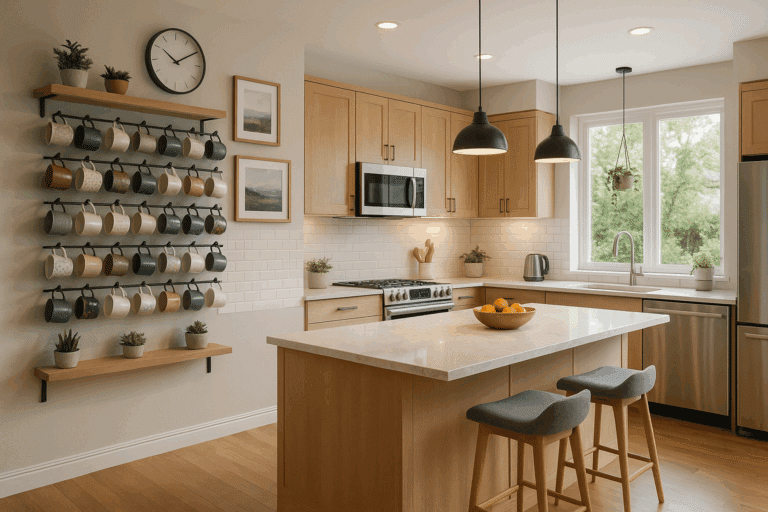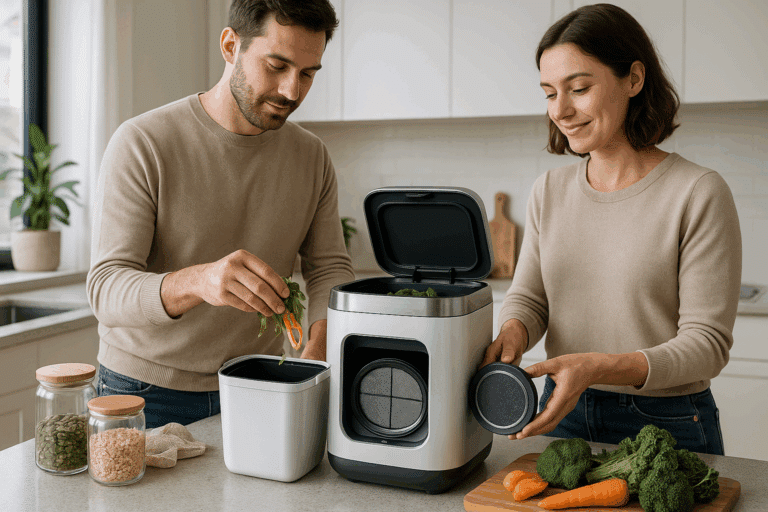Imagine this: a cup of coffee so perfect that it could be considered an art form. ☕ A harmony of taste, aroma, and texture that can only be achieved with the right combination of grind size, brewing method, and coffee beans. Now, stop imagining and get ready to make it a reality, because in this comprehensive guide, we’re going to deep-dive into the world of coffee grind sizes.
Just like any precise science, brewing the perfect cup of coffee requires meticulousness. The finest details can make the most significant difference, with grind size being a paramount factor. Though it might sound intimidating, understanding the influence of grind size on your daily brew isn’t rocket science 🚀. It’s simply about comprehending the basics and knowing when and how to adjust your grinder.
Here’s the deal: whether you’re a seasoned barista or a coffee enthusiast just getting started, the art of perfecting your brew is a journey worth embarking on. A quest that could lead you to a cup of coffee so delightful, so balanced, and so perfect that you might find yourself in caffeine heaven.
What’s Brewing in This Guide?
In this ultimate guide, we will embark on a caffeinated journey, demystifying the complexities of coffee grind sizes. You will learn how to master your grind, fine-tuning it for different brewing methods and coffee types.
We’ll start by unravelling the science behind the grind, showing you why it matters and how it can drastically affect the flavor profile of your coffee. We’ll then proceed to explain the different grind sizes, ranging from the coarsest to the finest, and which brewing methods each is suited for. We’ll also delve into the how-to’s of adjusting your grinder to achieve the perfect grind size, regardless of the coffee beans you’re using.
But that’s not all! To make sure you truly master your brew, we’ll provide tips and tricks to perfect your grinding skills. Plus, we’ll discuss the impact of grind size on extraction and how to troubleshoot common coffee brewing problems. By the end of this guide, you’ll be well on your way to becoming a grind size guru, capable of brewing a flawless cup of coffee every single time.
Ready to embark on this exhilarating exploration of coffee grind sizes? Grab a cup of your favorite brew, sit back, and read on. The journey to a perfect cup of coffee awaits! ☕🌟
A Sneak Peek into the Grind Size Universe
Before we start, let’s get a quick overview of the exciting coffee grind size universe that awaits us. You’ll discover how the relationship between grind size and brewing method isn’t just a suggestion—it’s a rule of thumb to ensure your coffee’s optimal taste. You’ll also learn how different grind sizes affect the extraction process, unlocking different flavors and aromas from your coffee beans.
Whether you’re using a French press, an espresso machine, or a pour-over dripper, there’s a perfect grind size waiting for you to discover. We’re going to break it all down, making this complex subject accessible and easy to understand. Buckle up and get ready to master your brew! 🚀☕
The Science Behind The Perfect Grind Size For Coffee
Have you ever wondered why your homemade coffee doesn’t taste quite like the one from your favorite coffee shop? The secret lies in the grind size. This crucial aspect can significantly affect the taste and quality of your brew. This article will guide you through the science of grind size, its impact on extraction, and how to master your brew every time.
Grind size refers to the size of coffee particles after the beans have been ground. It plays a crucial role in the extraction process, where hot water draws out the flavors from the coffee grounds. Different brewing methods require different grind sizes to achieve the perfect balance of flavor, acidity, and body.
Understanding the correlation between grind size and extraction is vital in creating your ideal cup of coffee. Over-extraction can lead to a bitter taste, while under-extraction may result in a weak and sour brew. Thus, the goal is to find the sweet spot in between, where you can enjoy the full spectrum of coffee flavors.
Grind Size and Its Effect on Extraction
When brewing coffee, water acts as a solvent, breaking down the coffee compounds and extracting the flavors into the water. The grind size directly impacts how quickly this process happens. Larger coffee particles slow down extraction, leading to a milder flavor. On the other hand, finely ground coffee has more surface area exposed to water, speeding up the extraction process and resulting in a stronger, more robust flavor.
Thus, the extraction rate is a delicate balance. You want the water to extract the desirable flavors from the coffee but not overdo it. The grind size is a tool you can use to control this process. For example, if your coffee tastes too weak, you may want to try a finer grind size. If it tastes too bitter, a coarser grind might be the solution.
However, adjusting the grind size isn’t the only factor at play. The brewing method also plays a significant role in determining the ideal grind size. Different brewing methods expose the coffee grounds to water for varying amounts of time, influencing the extraction rate. For example, an espresso machine forces hot water through finely ground coffee at high pressure, quickly extracting a concentrated flavor. On the other hand, a French press allows the coffee to steep in hot water for a longer period, suitable for a coarser grind.
Choosing the Perfect Grind Size for Different Brewing Methods
Now that you understand the science behind grind size and extraction let’s explore how to choose the ideal grind size for various brewing methods. We’ll compare the best grind sizes for popular brewing methods such as espresso, pour-over, and French press.
Remember, this guide is a starting point. The perfect grind size can vary depending on personal taste, the type of coffee bean, and even environmental factors like humidity. Therefore, don’t be afraid to experiment and adjust as needed to create your perfect cup of coffee.
Please note: A burr grinder is highly recommended for grinding coffee beans. Unlike blade grinders, burr grinders provide consistent grind sizes, which is crucial for optimal extraction. A quality burr grinder is a worthwhile investment for any coffee enthusiast.
| Brewing Method | Ideal Grind Size | Extraction Time |
|---|---|---|
| Espresso | Fine | 20-30 seconds |
| Pour-Over (e.g., Hario V60, Chemex) | Medium-fine to medium | 2-3 minutes |
| French Press | Coarse | 4 minutes |
How to Determine the Right Grind Size
Grind size is a critical factor, but how do you determine what the right size is for your brewing method? This section will delve into the specifics of how to identify the perfect grind size for your brew and provide practical tips to fine-tune your grind.
For an in-depth look at how grind size affects the taste of your coffee and a visual guide to grind sizes, check out the video “Coffee Grind Size for Every Brewing Method” on the YouTube channel “French Press Coffee”.
Learning how to adjust your grind size based on the taste of your coffee can take some time and experimentation, but it’s a rewarding process. If your coffee tastes too bitter, try a coarser grind. If it tastes too sour or weak, a finer grind might be the solution. Remember, slight adjustments can make a big difference, so adjust gradually until you find your perfect grind size.
Using Your Palate to Fine-Tune Your Grind Size
When adjusting your grind size, your palate is your most valuable tool. If your coffee tastes too acidic, it may be under-extracted. Try a finer grind to increase extraction. On the other hand, if your coffee tastes too bitter, it might be over-extracted. A coarser grind can help slow down extraction and balance the flavors.
Remember to make small adjustments at a time. The difference between a perfect brew and an over-extracted one can be as small as a few seconds of grinding time. And don’t forget to keep other variables consistent, such as water temperature and brewing time, to isolate the effects of grind size.
Becoming a master of your brew is a journey. It requires a willingness to experiment, a keen palate, and an understanding of the science behind coffee extraction. However, with time and practice, you can create a perfect cup of coffee that caters to your taste buds every time. So, get your grinder ready, watch the video linked above, and start exploring the wonderful world of coffee grind sizes!

Conclusion
In conclusion, we can appreciate the depth and complexity that the domains of IT and Engineering encompass. The expanse of knowledge needed to navigate these fields successfully is undoubtedly vast, which underscores the importance of understanding, and more importantly, being able to explain the intricate concepts that form the core of these disciplines. This is where the value of effective technical writing comes into play. 😊
The main points that we’ve covered in this article include the essential role of technical writing in IT and Engineering, its relevance to professionals in these fields, and how it aids in the communication of complex information in a simplified and comprehensible manner.
Indeed, the art of technical writing is a crucial tool that aids in bridging the gap between complex concepts and comprehensible understanding. It empowers professionals, enabling them to explain, instruct, and inform in a way that is both clear and precise. Furthermore, it plays a key role in facilitating knowledge transfer, which is critical for innovation and advancement within these fields. 💡
We also delved into the principles of good technical writing. These include clarity, accuracy, comprehensiveness, accessibility, and conciseness, among others. A well-crafted technical document is not just informative; it is also engaging, and easy to understand and apply.
The crux of the matter is that technical writing is a critical skill in the IT and Engineering industries. It is a skill that demands a deep understanding of the subject matter, along with an ability to communicate complex ideas in a simple, clear, and concise manner.
As we forge ahead into an increasingly digital and technology-driven future, the value of technical writing is set to increase exponentially. So, it is imperative that we continue to hone our technical writing skills and stay abreast of the latest trends and best practices in this area. 🚀
I hope this article has provided you with valuable insights and has sparked your interest in further exploring the art and science of technical writing. I encourage you to share your thoughts and experiences in the comments section below.
Remember, knowledge increases by sharing, and your contribution may very well aid someone else in their journey. So, do not hesitate to share this article with your friends, colleagues, and networks.
In case you want to dive deeper into this subject, here are some resources to get you started:
1. [Technical Writing Guide by Microsoft](https://docs.microsoft.com/en-us/teamblog/technical-writing-guide)
2. [Society for Technical Communication](https://www.stc.org/)
3. [Technical Writing Course by Coursera](https://www.coursera.org/courses?query=technical%20writing)
And remember, as Albert Einstein once said, “If you can’t explain it simply, you don’t understand it well enough.” Let’s strive to understand better, and explain simpler. Until next time! 💫
References:
[1] Microsoft Docs, “Technical Writing Guide by Microsoft”, [Link](https://docs.microsoft.com/en-us/teamblog/technical-writing-guide)
[2] Society for Technical Communication, [Link](https://www.stc.org/)
[3] Coursera, “Technical Writing Course by Coursera”, [Link](https://www.coursera.org/courses?query=technical%20writing)
Technical Writing Guide by Microsoft
Society for Technical Communication
Technical Writing Course by Coursera



